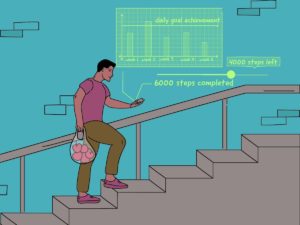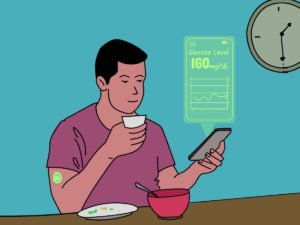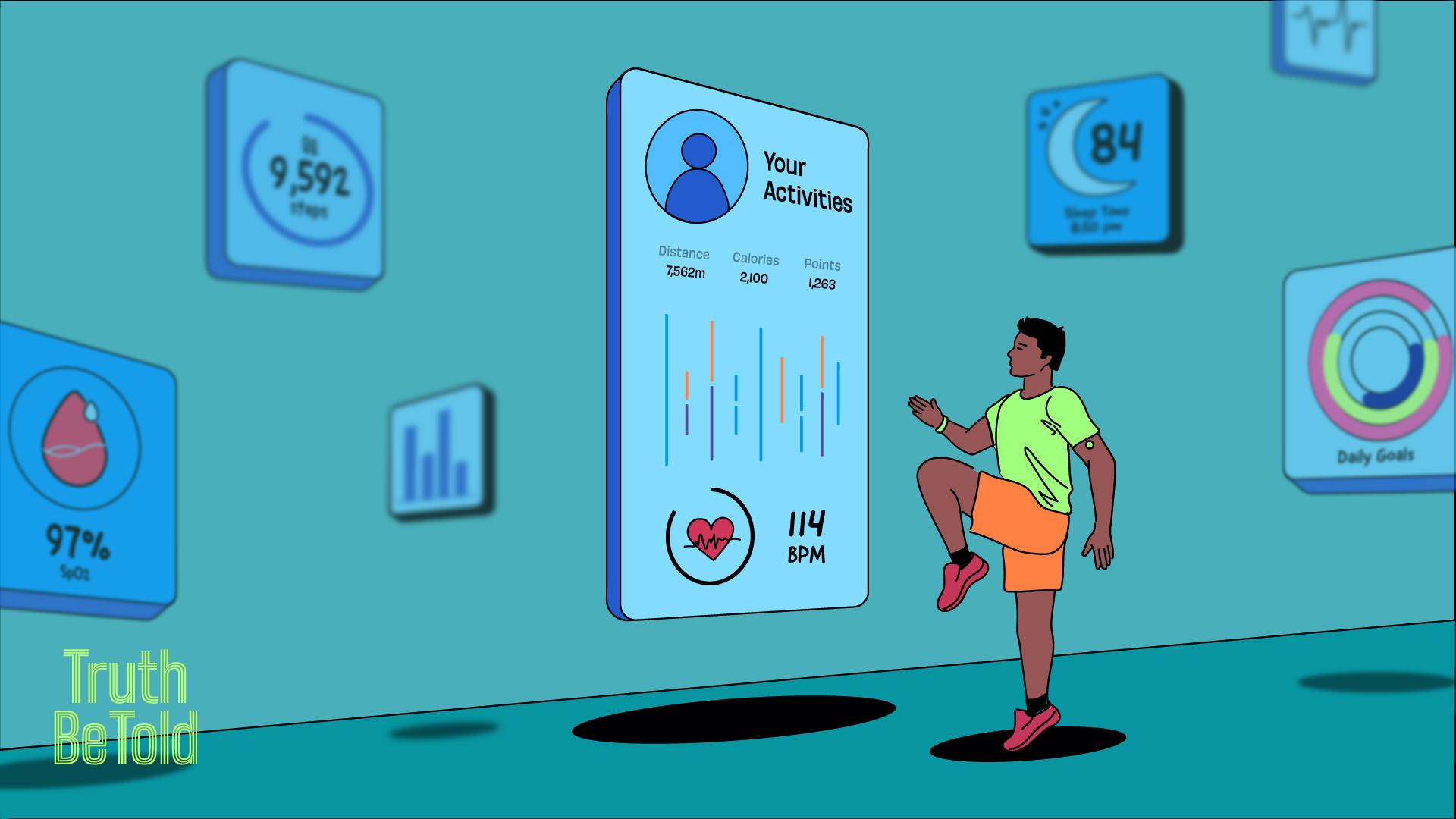Track your health to hack your health
Mukesh Bansal, CEO of cult.fit, shares tips on his go-to fitness tracking devices
The most trustworthy source of food and
fitness journalism in the country.
Welcome to Truth Be Told, a weekly food & fitness newsletter. New here? Read our manifesto: a note on why we exist.
Editor’s Note: Should you get a fitness tracker? Does it help or is it a fad? What to track and why?
If you have ever thought about these questions — I definitely have — Mukesh Bansal has a nuanced guide in today’s piece so you can figure out these answers for yourself.
Bansal, 47, is the founder of Myntra and now the CEO of cult.fit and his book Hacking Health was recently published by Penguin.
I’ve always considered myself a relatively fit and healthy person. I played almost every sport in school, went through an obsessive body-building phase in my early career years, and have always been pretty active.
However, only when I was building my first startup, Myntra — working long days, travelling across time zones several times a month, and dealing with the associated stress — did I realise what a superficial understanding of health I had.
I learnt my health lesson after visiting the Emergency Room in the Bay Area in 2007 when I was 31. This was followed by a nightmarish hospital stay during which my entire life flashed before my eyes. I was finally diagnosed with the less virulent strain of meningitis and sent home. I know it all sounds quite dramatic, but I needed this wake-up call. It was also the start of a lifelong journey studying health.
I recognised that being healthy was more than exercise and that a lack of sleep and stress had probably weakened my immunity. So I began to read everything I could on the subject–books, journals, and research papers. I experimented with what I ate, how I exercised and how much I slept, observing how each new routine made me feel.

I eventually founded cult.fit, a holistic health platform that aims to make health easy and accessible for everyone, recently published my second book, Hacking Health: The Only Book You’ll Ever Need to Live Your Healthiest Life.
I’m a computer engineer by training and find comfort in numbers. I constantly seek data and measurement in everything I do, and this extends to my health. I’ve always been curious about how my workouts, diet, sleep and other routines affect me physically.
Fortunately, thanks to modern science and technology, we now have devices that give us a clear picture of what’s happening inside our bodies in real time. These gadgets track various metrics, from heart rate and lung capacity, to blood glucose levels and sleep quality.
Over the last few years, I have experimented with several tracking devices to create a dashboard of sorts for my health. As technology advances, these devices have become more accurate, conveniently smaller, and better-looking. Instead of a clunky watch on your wrist, you can wear a barely noticeable ring that gives you incredible sleep and heart rate data.
Not long ago, the metrics we now get from sleek wearable gadgets were only available to us through expensive and often invasive hospital testing. Now, an app on your phone updates your statistics each morning, quite literally putting these aspects of your health in your hands.
My health dashboard currently consists of sleep measurements, heart rate variability and glucose levels. The data from the trackers I use have helped me solve problems and improve my overall health in many ways.
Like what you see so far?
Get TBT articles in your inbox every Saturday
1. Step Counting
The basic step counter is one of the most popular fitness tracking devices, and I think it’s a good place to start. The general recommendation for 10,000 steps a day is a useful way to ensure your days are not too sedentary.
When I started using one, I found that I would often take the stairs when I might have otherwise used the lift, just to get closer to my daily goal. Tracking steps can motivate people to be more active–walking instead of driving to the grocery store, or going for a quick walk in between meetings.

On the other hand, one of the things I noticed was that on days I did a very strenuous workout, adding 10,000 steps to the mix left me feeling too fatigued. So I’d recommend focusing on this number if you’re not doing any other physical activity or lowering your daily goal if you’re also regular at the gym.
2. Sleep
Sleep is absolutely essential for good health, and since many of us struggle to get enough of it, trackers can offer us the insight we need to figure it all out. The Oura Ring has played a role in helping me get my sleep routines back on track.

About a year ago, I started wearing this nifty little device which, among other things, gives you a sleep score every morning. My scores were consistently in the low 60s and 70s, which became so demoralising that I eventually gave up wearing it!
A few months later, I decided to give it another shot, and this time I carefully tracked the things that affected my sleep scores. I noticed a correlation between the time of my last meal and the time I went to bed.
When I ate dinner late in the evening and went to sleep soon after, my heart rate would remain high for the first few hours—something I knew interfered with the quality of sleep and recovery. After experimenting a bit, I now eat my last meal of the day four hours before I go to bed, drastically improving my sleep quality.
3. Heart Rate Variability
I currently use the Whoop band, the gold standard for measuring heart rate variability (HRV).
HRV is the variation in time between each heartbeat and reflects the ability of the heart to adapt to different situations, including moments of stress and relaxation.
The higher your HRV, the more ready your body is to perform. When I started tracking it, my HRV was quite low, and my readiness scores were low too. I experimented with varied workouts to see how they impacted my HRV and have found that adding some cardio to my routine helps raise it.

4. Glucose Monitoring
Using a continuous glucose monitoring (CGM) patch has given me an entirely new understanding of how my body responds to what I eat throughout the day. Once used only by diabetics to track blood glucose, CGMs are now being used even by those with normal levels. Not only is it a good way to keep an eye on things in case you’re at risk for being prediabetic, but if you’re as curious about what’s happening inside your body as I am, it can give you some really fascinating information. Seeing how my glucose levels go up and down depending on what, how and when I eat has shaped not only my diet but also my intermittent fasting schedule.

The Verdict
I think tracking technology can play a significant role in how we choose to optimise our health, and we’re likely to see even more advanced devices in the market very soon. As these get more accurate, we will get targeted insights into every aspect of our health, helping us fix chronic problems and improve the quality of our lives.
My tips for choosing and using a fitness device:
1. Ask yourself why: Is there a specific reason you want to start tracking some aspect of your health? Do you want to solve a problem such as chronic sleep deprivation? Are you curious about how your body responds to how you exercise or eat? If you’re doing it because everyone else is, the chances are you don’t really need it.
2. Listen to your body:
It’s easy to get overwhelmed with data and information and rely only on our trackers to tell us if we’ve slept well or are ready for our next workout. We forget that our moods, state of mind and levels of fatigue or energy are also pretty good ways of gauging these things. Staying in touch with the body and its cues is essential no matter how advanced the technology gets.
3. Don’t let stats stress you out:
Getting a little too caught up in metrics is possible. There was a time when I was obsessed with my sleep statistics and would get upset about a low score. These days, though, when I know I haven’t followed my usual evening routine, I take off the tracker before I go to bed to avoid unnecessary stress the following day.
Like what you see so far?
Get TBT articles in your inbox every Saturday
I hope this primer on tracking devices is useful, whether you’re just getting started on your health journey or looking to level up on the data you can access. All this technology is incredible, giving us deep insight into how our bodies function and helping us solve problems by measuring and comparing metrics.
However, none of these gadgets is essential for good health. And they definitely cannot make up for an otherwise less-than-healthy lifestyle. Sure, they’re nice to have. Some even look quite cool and offer fun ways of competing with friends and family. But the truth is, good health boils down to getting a few simple things right.
As I always say, if there are just three things you can do today: Eat less, sleep more, and always move. Everything else—including that shiny new tracking device—is a bonus.
Click the logo to sign up for the newsletter


